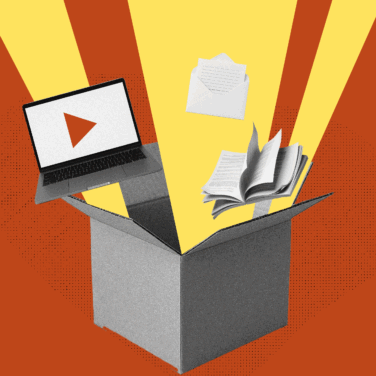Mapping Your Workforce Journey: HR planning serves as a roadmap, guiding organizations in aligning their talent management strategies with business objectives to ensure effective navigation through staffing needs.
Predict and Prepare for Growth: The process enables companies to forecast future workforce requirements, helping to avoid talent shortages and ensuring that the right people fill the right roles.
Boost Employee Satisfaction: By optimizing workforce planning, organizations can enhance employee satisfaction, leading to increased productivity and higher retention rates.
Effective HR planning is the foundation of a thriving workforce and a resilient business. Whether you’re a small business owner or an experienced HR professional, a well-structured HR plan helps you align talent with business goals, boost employee engagement, and drive long-term success.
In this article, we’ll break down the key components, benefits, and best practices of HR planning—giving you the strategies you need to build a more agile and people-focused organization.
What Is Human Resource Planning?
HR planning is a strategic process that seeks to align an organization’s talent management strategies with its business goals and objectives.
The HR planning process involves forecasting future workforce needs, assessing current workforce capabilities and needs, talent market assessments, and identifying specific issues related to talent management, e.g. retention.
HR planning's core purpose is to keep the company productive and profitable. Typically, it involves a four step process that includes:
- Understanding your current workforce
- Predicting future staffing needs
- Finding a balance between the number of employees available and the number needed
- Ensuring talent and processes support the company’s goals.
How HR Planning is Used
Think of HR planning as a roadmap for your company’s workforce needs. You wouldn’t set off on a road trip without a map or GPS. Similarly, businesses shouldn’t navigate their growth without a HR plan.
By anticipating future staffing needs and aligning them with your company’s goals, HR planning helps ensure you have the right people in the right roles at the right times.
Some the business outcomes you can use HR planning to influence include:
- Better talent attraction and management: HR planning directly impacts your ability to find, attract, select, train and reward the most skilled candidates.
- Enhanced employee performance: HR planning provides clarity for your workforce, outlining clear roles, expectations, and career paths to keep employees motivated.
- Better workforce planning: HR planning helps you create better succession plans, cultivate resilient teams, and optimize your head count. Some AI workforce planning tools can provide valuable predictive insights to help here.
- Improved cost and risk management: HR planning optimizes costs by ensuring efficient employee utilization, reducing excess spending on non-productive labor. It helps maintain adequate staffing for increased productivity and minimizes resource gaps through effective forecasting, avoiding last-minute hiring or overtime.
HR should be a strategic partner in business planning, ensuring that the workplace enables employees to perform at their best. Modern HR planning involves creating supportive environments, proactively monitoring challenges, and driving continuous improvements to enhance both employee experience and business outcomes.
Goals of HR Planning
HR planning isn't just about filling positions, it's about strategically shaping the future of your workforce to meet the needs of your business. Here are the primary goals:
Forecasting future needs
Just like weather forecasting helps us prepare for the elements, HR planning involves predicting future workforce needs based on business goals, market trends, and upcoming projects.
Bridging skill gaps
HR planning identifies missing skills within your workforce and finds ways to fill them, either through hiring, training, or development programs.
Supporting growth and expansion
If your company is looking to grow, whether by expanding into new markets or launching new products, HR planning identifies the people needed for this growth, ensuring you have the right mix of talent to support your ambitions.
Enhancing employee development
Good HR planning also focuses on the growth and development of existing employees. It creates pathways for career advancement, which not only helps in retaining top talent but also ensures that your workforce is continually evolving and improving.
Ensuring compliance and risk management
With constantly changing labor laws and regulations, HR planning helps businesses stay compliant and manage risks effectively. This includes everything from ensuring fair hiring practices to maintaining proper documentation and managing employee relations.
Optimizing costs
Efficient HR planning can optimize costs by reducing turnover, improving hiring processes, and ensuring that resources are used effectively. This cost efficiency supports the overall financial health of the business.
Challenges Of Human Resource Planning
The future is notoriously difficult to predict and several internal and external factors can complicate the HR planning process.
- Competing priorities. Sometimes, a lack of clear priorities from business leaders makes planning for future talent needs difficult. Organizations often struggle to balance immediate staffing needs with long-term strategic goals, leading to potential misalignments between workforce capabilities and organizational objectives.
- Data management and analytics: Collecting and analyzing reliable workforce data to inform HR planning decisions can be tricky, especially for organizations that lack the necessary tools, or have too many tools that there's no single source of truth.
Consolidation of HR tools can improve efficiency, but it requires careful planning. The goal is to centralize data without losing the nuance needed to address unique team dynamics.
- Adapting to market changes: Fluctuations in the labor market, such as skill shortages, can complicate the planning process.
Tools for HR Planning
Modern HR planning is driven by existing data points and predictive metrics, making it easier to anticipate workforce needs, address skill gaps, and optimize HR processes. Here are some essential tools used in HR planning:
- HR Dashboards & Analytics – HCMs and HRIS have reporting features that provide real-time workforce insights, such as turnover rates, hiring trends, and employee engagement scores. These dashboards help HR teams make data-driven decisions and plan for the future.
- Compensation Planning Software – By mapping out compensation structures, this ensures competitive and equitable pay structures by analyzing salary trends, benefits packages, and performance-based compensation models.
- Performance Management Systems – These tools track employee performance, identify skill gaps, and align individual growth with business goals through real-time feedback and goal-setting frameworks.
- Workforce Planning & Forecasting Tools – Using AI and predictive analytics, HR managers can easily assess future hiring needs, project attrition rates, and optimize resource allocation.
- Employee Feedback Platforms – Regular HR surveys can help gauge employee satisfaction, identify workplace challenges, and implement targeted improvements to enhance engagement.
8-Step HR Planning Process
The HR planning process is both forward-looking and adaptable, aiming to align workforce capabilities with the organization’s goals and objectives. The key steps in the HR planning process are:
1. Understanding organizational objectives
- Begin by thoroughly understanding the organization's strategic plan, including its long-term goals, competitive positioning, and key business drivers.
2. Workforce analysis
- Conduct a talent review to assess the current workforce in terms of size, skills, competencies, age, turnover rates, and other relevant factors.
- Assess the external labor market for the availability of required skills and competencies.
- Assess employee feedback about any challenges they’re facing in the organization and how they’d improve things.
3. Forecasting demand for talent
- Predict future workforce requirements based on organizational objectives, projected turnover, technological advancements, and market trends.
- Consider both the quantity and quality of employees needed to achieve organizational objectives.
4. Identifying skills gaps
- Perform a skills gap analysis to compare the demand for labor with the current supply, both internally and externally. The aim is to identify where the organization may face shortages or surpluses of specific skills or roles.
5. Developing HR strategies to address gaps
- Formulate strategies to bridge identified gaps and optimize talent usage. This could include recruitment, training and development, restructuring, outsourcing, workforce reduction, and retention strategies
- Create goals and key performance indicators (KPIs) to make it easier to track progress
- Consider long-term strategies like succession planning.
6. Assessing HR’s capabilities
- Complete the above steps for the HR department. Is there capability within the team to meet the new objectives and deliver projects?
- What HR software solutions could help and which processes could be improved?
- Assess where there are opportunities for automation of HR processes.
7. Implementation, monitoring, evaluation, and feedback:
- Periodically monitor the implementation of HR plans against set objectives.
- Evaluate the effectiveness of HR strategies and make adjustments as needed.
- Collect feedback from stakeholders to inform future HR planning efforts.
8. Review and revision:
- Regularly review HR planning processes and outcomes in light of changing organizational needs and external conditions.
- Revise HR plans to ensure they remain aligned with organizational goals and responsive to the dynamic nature of the labor market.
Tips for Effective HR Planning
There are a lot of moving parts when it comes to talent management and the HR planning process.
For effective strategic human resource management, many companies rely on HR outsourcing services to manage routine tasks. HR outsourcing can free up internal HR teams to focus on strategic management initiatives.
Or, you can keep it internal. Here some tips to help make the process more accurate and efficient:
- Engage senior management: Ensure that senior executives understand and support the HR strategy. Leadership buy-in is critical for securing the necessary resources and for cascading the importance of the strategy throughout the organization.
- Keep good data hygiene. Being able to accurately measure key HR metrics such as attrition and retention rates is vital for HR planning. Technology such as HR analytics software can help here.
- Set clear KPIs. Your human resources strategies and initiatives should always be mapped back to your organizational strategies. Likewise, your HR KPIs should be able to articulate how HR professionals are providing real value realization against those same strategies.
- Gather feedback from employees. Great ideas can come from anywhere and employee listening should inform any HR planning process.
- Create a skills library. Many organizations are now moving from a roles-based approach to talent management to a skills-based one. Part of this is building out skills libraries that define what skills mean in an organization and make it easier to track them.
- Deconstruct complex processes. As part of your HR planning efforts, segment complex HR challenges into simpler, easier-to-implement components. For example, can you condense you streamline your technology needs or integrate HR systems that could minimize the need for repetitive tasks and manual data entry.
- Outsource when needed. HR planning sometimes involves the HR department managing payroll alongside other critical responsibilities. Could repetitive tasks like this be outsourced to a different apartment, individual, or even external service?
FAQs
What is "hard" HR planning vs. "soft" HR planning?
How can HR planning help address unexpected workforce disruptions?
What tools or software can make HR planning more effective?
How does HR planning adapt to rapid industry changes or technological advancements?
What's Next?
Want to keep up with all the latest trends in HR? Subscribe to the People Managing People newsletter and you'll get all the latest insights, tips and techniques delivered straight to your inbox.



